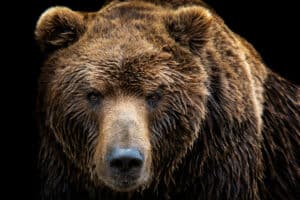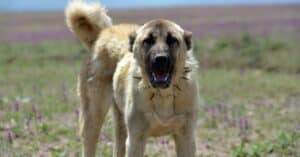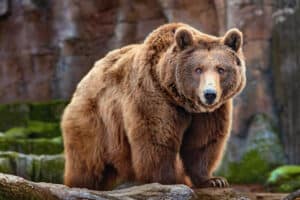Swimming comes easily to so many different small species of the animal kingdom. Normally, when you think of swimming, the first land-based animals are not typically bears. The bear, as big as it might be, has many different skills, but is swimming one of them?
With all of the facts known about this major predator, can they swim?
Simply put, yes! Bears have the ability to swim, but the species, reasons, and regions all play roles in why these bears might swim. Surely, you’ve seen videos and demonstrations of the polar bear’s proclivity for swimming, but other species have a knack for it too.
Bears: Can Every Species Swim?
Despite their large, furry bodies brown bears are especially good swimmers. Bears have a high fat content with an oily coat which helps them stay afloat while in the water. Additionally, polar bears can swim more than six miles an hour which actually matches Michael Phelps’s fastest recorded swimming speed!
The studies on the swimming aptitude of bears (apart from polar bears) are rather limited, but many other species are capable of swimming when they need to.
- Polar bears can go for miles in search of food, and their abilities allow them to be classified as marine mammals.
- Black and brown bears (also known as grizzly bears) can swim, but they don’t often venture out for recreational purposes.
- Koala bears have the ability to swim, but it is difficult for them to get back out of the water.
- Panda bears, while they can swim, don’t have much purpose for going in the water in their natural habitat.
If all of the different bear species have the ability to swim, do their cubs have the same ability? Yes. While polar bears start teaching their cubs to swim early, black bear cubs and grizzly bear cubs typically won’t go in the water until they are at least 13.6 kg.
Overall, bear species generally have incredible swimming capabilities, though some of them do not find it to be necessary.
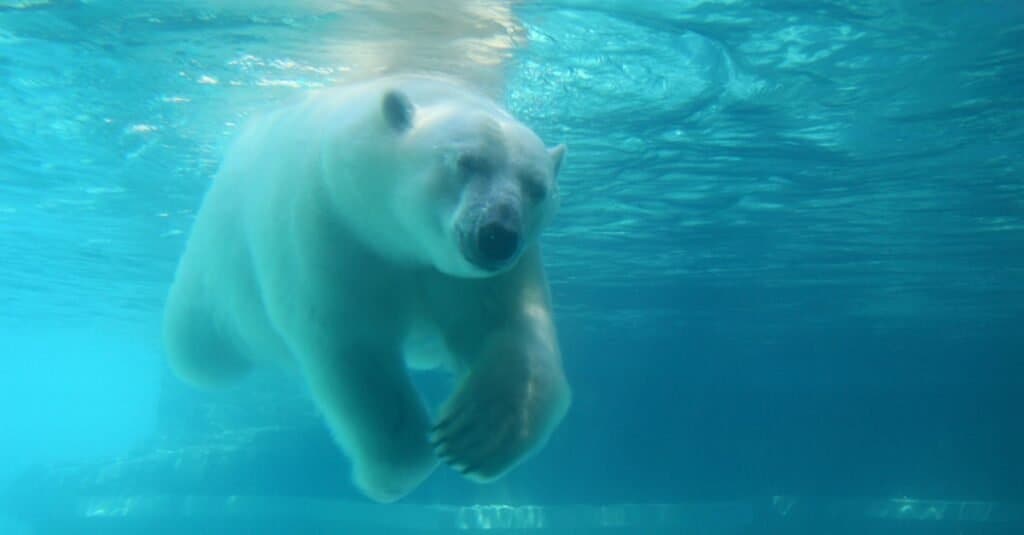
©Vladimir Gjorgiev/Shutterstock.com
Bears: Swimming Style
As large as the bear is, the body shape is much like a dog, giving them the ability to perform a “doggy paddle” to swim, using all four of their legs. Black bears, brown bears, and most other species paddle their front limbs, mostly keeping their body afloat with this part of their body. Their back legs, while they may slightly paddle, are not responsible for keeping them moving.
The black bear and brown bear are not quite as skilled as the polar bear. Most of their diet is land-based, and they don’t often have a reason to immerse themselves in the water. Using the paddling motion makes it easy for them to temporarily get through the water, but it is rather exhausting for their build.
The polar bear can dive and swim effortlessly through freezing temperatures. They need to breathe, so they use the breaks in the ice above them as ways to exit the waters when hunting. The water is where they are the most comfortable, which is why they can quickly go after seals and even whales when they spot them.
Bears: Why Would They Swim at All?
The biggest reason that any bear chooses to swim is to hunt. Polar bears focus on sea ice hunting for the majority of their life, allowing them to swim between ice sheets when the weather warms. They need to be able to swim large distances to get to the food they need to survive, and the cracks above them make it easy to select their next target. Taking a swim is a normal part of their day!
Brown bears and black bears alike will go in the water to hunt for salmon in the spring, due to their natural migration. However, very little swimming is involved. The streams that these salmon live in are predominantly shallow, making it easy to hunt without having to swim. Still, black bears are more likely to find areas to play in as well, according to the National Park Service.
Giant panda bears don’t really have the opportunity to be in the water in their natural habitat because they have nothing to hunt there. The diet of panda bears mostly includes food that they can get on land, and their typical environment doesn’t require them to travel distances that cover rivers or streams. As good as they are at swimming, they don’t have many purposes for it.
The cubs of grizzly bears and black bears have to wait to spend time in the water so they can build up the necessary weight. However, they aren’t normally involved in the salmon fishing that takes these species to the water in the first place, due to the dense populations around these areas in the spring.
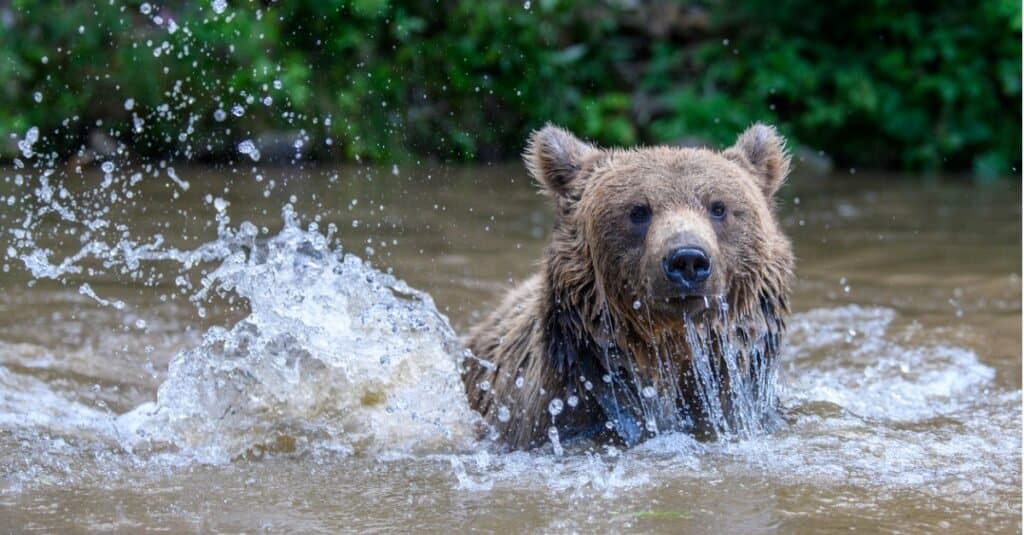
©iStock.com/Byrdyak
Bears: Determining Physical Features
The large size of the bear may leave you wondering how it can possibly spend so much time in the water. These mammals are apex predators, which means that no other animal will hunt them. Still, their size and girth are a few facts that put them at a great advantage. They also have massive paws that move them through the water with their paddling rather easily.
According to biologists with the U.S. Fish and Wildlife Service, the incredible fat content of the grizzly bear’s body, along with the oiliness of their coat, help them to remain afloat without the risk of drowning. The same can be said of other species, which is necessary to keep the polar bear as warm as possible when it dives in freezing waters.
Bears: Swimming Speed and Distance
With all of these facts considered, how much distance can a bear realistically get while swimming? The polar bear rises above the other species for all the time that it already spends in the water.
When observed, some polar bears will spend hundreds of miles between ice sheets for consecutive days, and one female has even been witnessed swimming for 9 days with no more than a 2-day break.
Ultimately, the average polar bear will only swim for up to 10 hours a day, stopping to rest as needed. The placement and span of the ice sheets determine how much further they go. Many researchers have tried to measure their speed before, and the answers are varied (at best). On average, polar bears can move at a rate of 10 km/h, though their cubs will take breaks much sooner as they build up their weight.
Black bears and grizzly bears are much slower because their diet doesn’t rely on chasing prey over long distances. They swim at about the same rate that they walk, thanks to their large paws. Koala bears don’t need to swim much, so very little is known about their speed.
However, they often struggle to get back out of pools when they’ve sought out water sources, so it is possible that koala bears don’t have quite the skills or stamina as other types of bears.
Next Up…
- Bear Predators: What Eats Bears? – Do bears have predators? Find out now!
- Are There Bears in Pennsylvania? – Do bears live in Pennsylvania? Click now to learn more!
- Moon Bear vs Sun Bear: What Are the Differences? – Learn the key differences between a moon and sun bear!
The photo featured at the top of this post is © Mihai_Andritoiu/Shutterstock.com
Thank you for reading! Have some feedback for us? Contact the AZ Animals editorial team.



